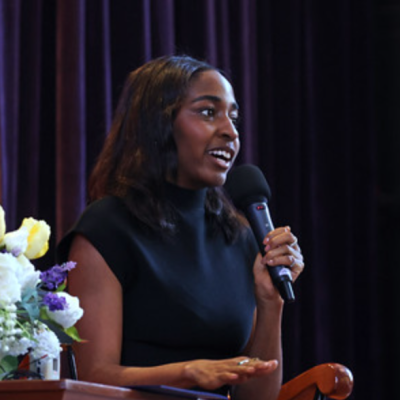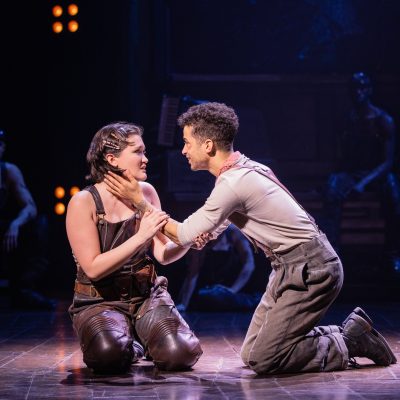Teen girls deserve better representation in books
Imagine being an 11-year-old girl. You enjoy things like makeup and clothes. You developed early and are curvier than most of your peers. This is an insecurity of yours, but you’re good at ignoring it. One day, you go to a library and, as someone who loves reading, dive into a book you think is perfect for you. After you get a few chapters into the book, you realize that the main character describes all your interests as weak. Disappointed, you pick up the next book, which hits you with a similar problem. The third book is different, but only because it hyper-sexualizes and ridicules the girl with a body like yours. All the insecurities you used to be successful at warding off come rushing back and you question your identity. If you can’t be written as anything but a weak, slutty antagonist, then what can you be in real life?
This is a question that many girls, including me, have asked themselves. As a group that is already prone to intense insecurity due to hormonal changes and societal pressures, preadolescent girls deserve to see themselves well represented, especially in books written specifically for them. And yet, authors tend to patronize, deride, and slut-shame their female characters who don’t fit a very narrow description. Instead, they can, and should, write girls as people in various roles with various personalities.
Authors often write female teens and preteens as extensions of appearance-based stereotypes. While some could chalk this up to bad writing, the issue becomes much, much deeper, as many of these stereotypes involve sexualizing young girls, solely because of their physical appearance. An article by Media Smarts states, “Young girls are being bombarded with images of sexuality, often dominated by stereotypical portrayals of women and girls.” Child development expert Dr. Maya Gotz agrees with this as well.
This is a problem that leads to issues in the way girls see themselves. They may feel as though they’re too sexual or not sexual enough, that they don’t act or look the way they should. Dr. Seena Grewal, a psychiatrist who heads the Eating Disorders Program at Toronto’s Hospital for Sick Children, says that she’s seen body image dissatisfaction in children as young as six. This is sad on its own, but things get worse when considering that girls are exposed to these harmful impressions in media made specifically for them.
One example of this tragic dynamic is the middle-grade novel “Listen, Slowly,” by Thanhhà Lai. In this book, the protagonist, Mai, often obsesses over her friend’s body, the boys she hangs out with, and the bikini she wears. Mai makes comments about these attributes of her friend in exclusively critical or condescending tones, making statements like, “How big do [her boobs] need to be?” These remarks become more problematic as the story reveals that Mai’s friend is the antagonist for seemingly no reason other than her body, dates, and clothes. The author tries to turn the protagonist’s remarks into a message about jealousy and insecurity, but this theme is drowned out in a sea of slut-shaming remarks, and the message that ends up getting across is: “Your friends won’t like you unless you look just like them and don’t date more than them.”
Not only are girls finding their physical appearance attacked, their interests are also under intense scrutiny, with femininity and weakness becoming synonyms. When girls are portrayed as liking stereotypically girly things (makeup, clothes, gossip, etc.), they’re depicted as dumb, shallow, and weak. This harmful characterization has only seemed to rise in recent years, as the popularity of the “strong female character” trope has left authors scrambling to ensure that their protagonists are as tough, brave, and masculine as possible.
In the “New York Times” article “I Don’t Want to Be the Strong Female Lead,” filmmaker Brit Marling speaks about the issues that come with the popularity of this trope. “It’s difficult for us to imagine femininity itself – empathy, vulnerability, listening – as strong,” Instead of trying to expand the readers’ thinking, authors write their strong characters as masculine as possible and let femininity keep all of its negative connotations.
One book that exemplifies how strong female leads are written as masculine is “The Hunger Games” by Suzanne Collins. In this book, readers get to see the protagonist, Katniss, fend for and protect herself, her family, and, eventually, her country. Katniss also happens to be an incredibly unemotional girl who only has male friends and enjoys things like hunting and physical activity. Some of these traits are more because of the story’s context than gender roles, but the underlying tone of “masculinity is strong, femininity is weak,” is apparent nonetheless.
Some might argue that it’s good if female protagonists are against girly things because it dismantles stereotypes. Being girly is still what’s considered “normal” for girls. Isn’t it good to have books that show that hyper-femininity isn’t always good?
While it’s good for books to have a wide variety of character portrayals, it’s incredibly counterproductive to have one group on a pedestal while the other is only portrayed negatively. If feminine girls are being called weak and are being slut-shamed, it doesn’t matter how good masculine girls feel about themselves.There is still a group of people who are being unfairly portrayed as inferior.
That being said, there are still some books that write girls well. Judy Blume’s “Are You There, God? It’s Me, Margaret,” for example, does a superb job of displaying the struggles and insecurities that girls of all shapes and sizes face. There are also books like those in Alex Morgan’s series “The Kicks,” that feature characters written as people, not extensions of stereotypes. But, until these types of novels become the norm, readers need to take action.
Well, what can they do? The most important thing is to continue to hold authors accountable. Representation won’t get any better if people don’t know that their portrayals are problematic. Leaving reviews, calling attention to issues like these, or even thinking critically about the things we read can lead to serious improvements. And, for any teen or preteen girls reading this, know that you can be whoever you are. A book character doesn’t get to determine that. You do.










